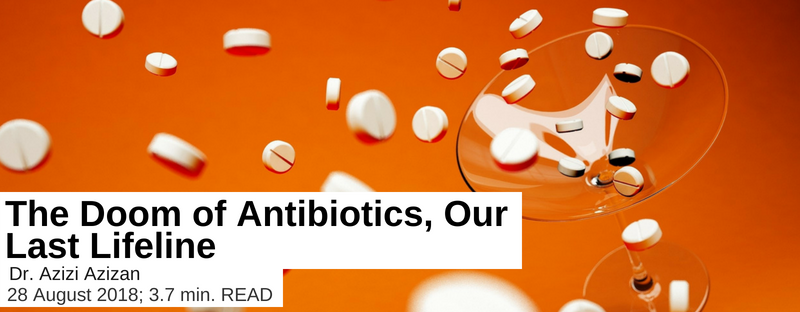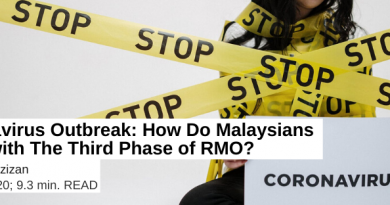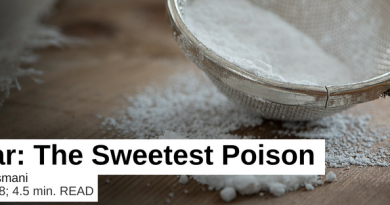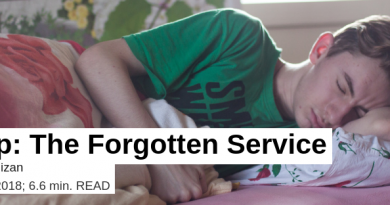The Doom of Antibiotics, Our Last Lifeline
This September marked the 90th anniversary of the discovery of the world’s first antibiotic in 1928, after Sir Alexander Fleming had accidentally stumbled upon the substance (now known as benzylpenicillin or penicillin G) that has bacterial killing properties. It was a major breakthrough in the world of medicine as if we have won a war against bacterial infection, or so we have thought…
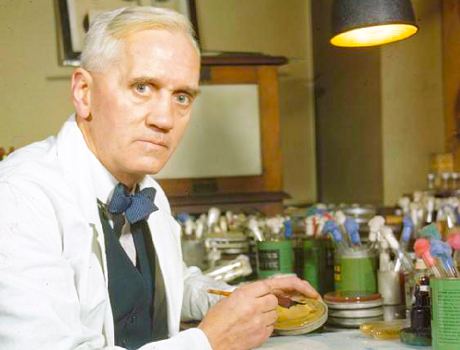
Fast forward to 2018, we are currently facing a bigger threat globally, an emergence of antibiotics-resistance microorganisms. Think of this as the Darwin’s theory of evolution for bacteria. This natural adaptive mechanism resulted in new species of bacteria that have far more resilience and resistance to the current array of known antibiotics. Fortunately for us, as with any other evolution of a species, this is a very slow process.
However, scientists around the world have been witnessing an increasing rate of this phenomenon most probably due to our overuse and underuse of these antibiotics. This could be attributed from a few common misconceptions and misunderstandings such as and not limited to:
All infections will need to be treated with antibiotics
You can stop taking the antibiotics once you are feeling better
There is also a major problem of misuse of antibiotics worldwide such as in farming industry. The practice has been banned recently, but up until 2006, there are many countries including US, China and some of the European that still use the antibiotics in non-diseased livestock for the promotion of growth. It was reported that 38.5 million kilograms of antibiotics were used in China alone in 2012 in the swine and poultry industry. A study in 2013 showed that this massive use of antibiotics in Chinese pig farming posed a threat of the worsening emergence of antibiotic-resistance organisms.
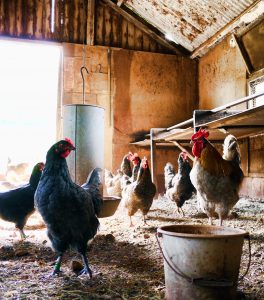
There is also an ongoing biological arms race between manufacturing for new and more effective antibiotics, and the emergence of antibiotic-resistance organisms. Though, developing a new antibiotic is not easy and time-consuming process. In truth, most of the ‘new’ antibiotics marketed over last few decades are the next generation of the previous drug i.e. a follow up compound. Developing this is not cheap either, generally speaking, the cost of developing a new drug could be as high as USD 2.6 billion.
Ideally, this threat to the global health would demand a multilevel response. Yet, for us as individuals – there are few simple things that we can do to alleviate the threat by taking the following preventive measures.
Antibiotics 101:
Only use antibiotics if it prescribed as necessary by health professionals.
Complete the course of the prescribed antibiotics and never share or use leftover antibiotics.
This should also include these simple non-exhaustive guidelines including washing hands regularly, preparing food hygienically, avoiding close contact with people who are ill, practising even safer sex, and keeping vaccinations up to date.
Reference list
American Veterinary Medical Foundation (AVMF) Veterinary Feed Directive (VFD) https://www.avma.org/KB/Resources/Pages/VFD123.aspx
Discovery and development of penicillin, American Chemical Society (ACS): https://www.acs.org/content/acs/en/education/whatischemistry/landmarks/flemingpenicillin.html
Krishnasamy et al (2015) Antibiotic use in Chinese swine and broiler poultry production. BMC https://aricjournal.biomedcentral.com/articles/10.1186/s13756-015-0050-y
Mullin (2014) Tufts study finds big rise. Chemical & Engineering News https://cen.acs.org/articles/92/web/2014/11/Tufts-Study-Finds-Big-Rise.html
REGULATION (EC) No 1831/2003 OF THE EUROPEAN PARLIAMENT AND OF THE COUNCIL of 22 September 2003 on additives for use in animal nutrition https://eur-lex.europa.eu/legal-content/EN/ALL/?uri=CELEX:32003R1831
Sukkar E (2013) Why are there so few antibiotics in the research and development pipeline. The Pharmaceutical Journal https://www.pharmaceutical-journal.com/news-and-analysis/features/why-are-there-so-few-antibiotics-in-the-research-and-development-pipeline/11130209.article?firstPass=false
Tatlow DK (2013) Global health threat seen in overuse of antibiotics on chinese pig farms. The New York Times https://rendezvous.blogs.nytimes.com/2013/02/18/global-health-threat-seen-in-overuse-of-antibiotics-on-chinese-pig-farms/

Dr. Azizi Azizan is an advanced trainee of CICM and ICU Senior Registrar with Liverpool Hospital, Australia.
Contact info: dr.azizi123@gmail.com

